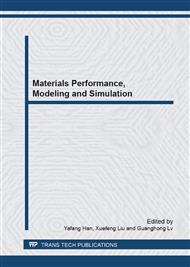p.54
p.61
p.67
p.75
p.82
p.88
p.96
p.105
p.112
Research on Dieless Drawing Process of Stainless Steel Tapered Tube
Abstract:
The traditional forming technologies of stainless steel tapered tube have some disadvantages, such as its complicated processes, few product specification, low production efficiency and high production cost. Dieless drawing is a new kind of near net-shaping process for fabricating tapered metallic tubes with large deformation per pass, high yield ratio of material and flexible production. Dieless drawing of stainless steel tapered tube was studied systematically in order to establish both temperature field model with respect to the changes of boundary condition and metal flow velocity during deformation, and a drawing speed controlling model with respect to the volume change of deformation zone. The models were verified by experiments in the present investigation. Finally, a continuous pickling process with variable-speed was proposed for tapered metallic tube, which was successfully applied to surface oxidation film removal of the stainless steel tapered tube.
Info:
Periodical:
Pages:
82-87
Citation:
Online since:
March 2013
Authors:
Price:
Сopyright:
© 2013 Trans Tech Publications Ltd. All Rights Reserved
Share:
Citation:


